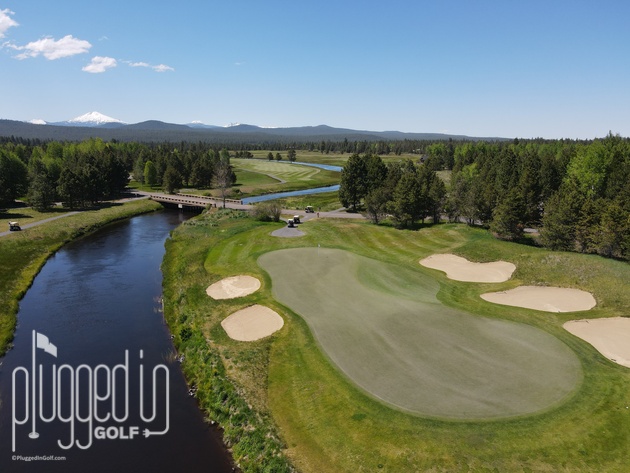50 Words or Less
The Crosswater Club, part of the Sunriver Resort in Bend, Oregon, sits in a sprawling, gorgeous landscape. Playable off the tee but demanding into the green. Tough but fair.
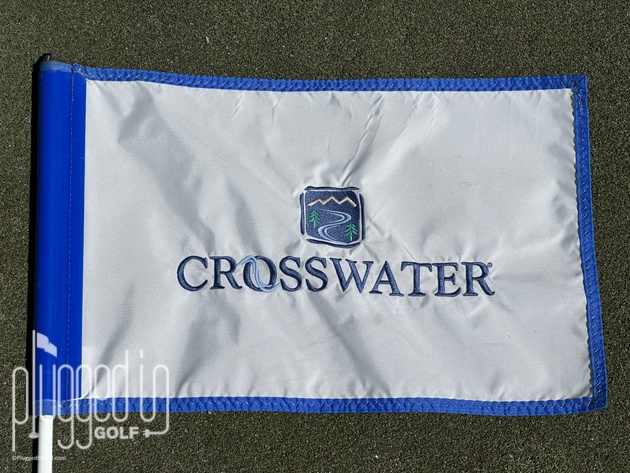
Introduction
There are golf courses with generic names and others with fun names, but few are more appropriately named than Crosswater Club. Sitting on 600 acres of woodlands and wetlands, this course brings you into near constant contact with the Deschutes and Little Deschutes Rivers. If you’re ready to put your iron game to the test, head to this championship course in central Oregon.
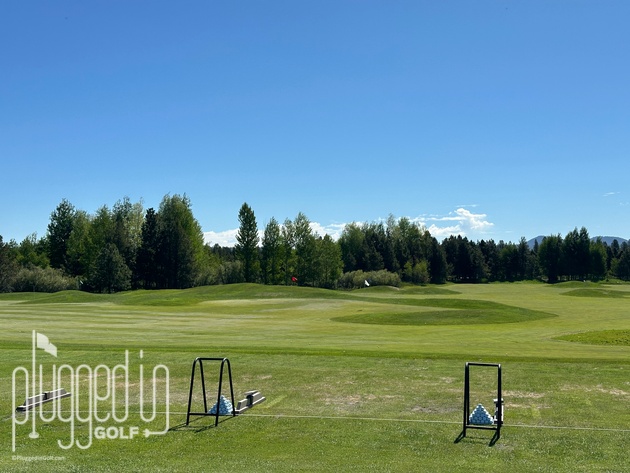
Practice Facilities
On the way to the first tee, Crosswater Club has all the practice facilities you need to get your game warmed up. There’s a putting green that can accommodate about eight players, and it mirrors the course conditions. The range is enormous, easily housing two dozen players. On the far right side of the range, there’s a short game area with a small target green and a couple bunkers.

Something that reflects Crosswater Club’s commitment to their players are the yardage markers at every hitting station (above). Target greens are only useful if you know how far you are from them, and Crosswater allows you to get dialed in to the exact yardage.
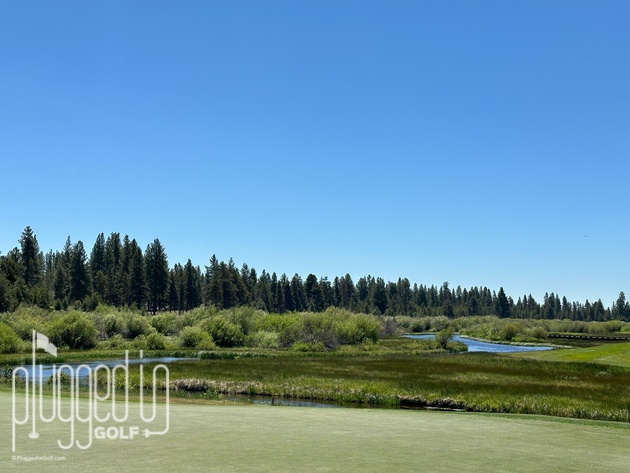
Amenities & Customer Service
Excellent customer service was the norm throughout our trip to central Oregon, but Crosswater Club set the standard. There were club employees seemingly around every corner, all with tremendous enthusiasm for the course and its guests. Chief among them was Rusty who was quick to tell us that he was playing a round after his eight hour shift – a testament to his love for the course.
Crosswater is also very serious about pace of play. There were several marshals on the course – a rarity in itself – and they were actively policing the pace. They even gave a friendly nudge our group, for which I give them major credit.
Moving to the amenities, Crosswater Club keeps everyone hydrated with two comfort stations, a beverage cart, and a walk-up cafe at the turn. The pro shop is packed with soft goods. Finally, the GPS units on the carts are excellent, displaying yardages to the pin and much more.
Learn why Central Oregon is one of the best golf destinations HERE
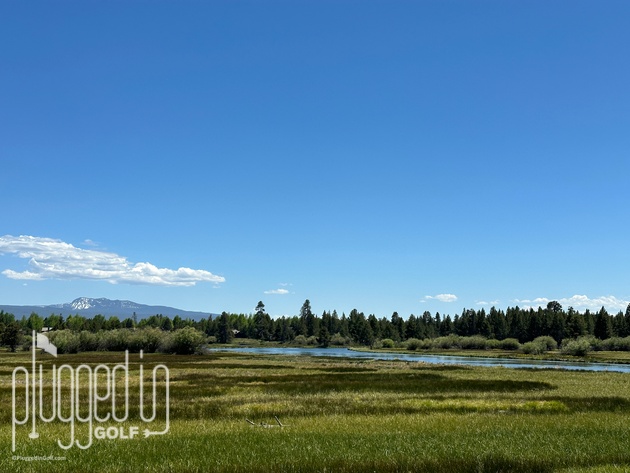
Beauty & Scenery
Crosswater Club is one of the most beautiful courses I’ve ever played. The front nine has the look of a mountain course. The holes are more separated, playing through substantial tree lines.
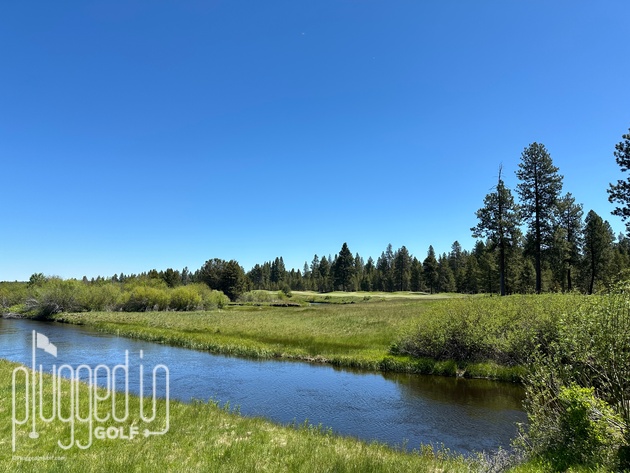
As you start to head toward the back nine, the views open up, allowing you to see miles in different directions. These long views with the Cascade Mountains in the background are breathtaking.

The constants across both nines are the Deschutes and Little Deschutes Rivers. From an aesthetic perspective, they are a constant, welcome companion. The rivers bring with them other outdoors people, tubing and kayaking on the river. But, as I’ll discuss next, the water is much more than an eye candy at Crosswater Club.
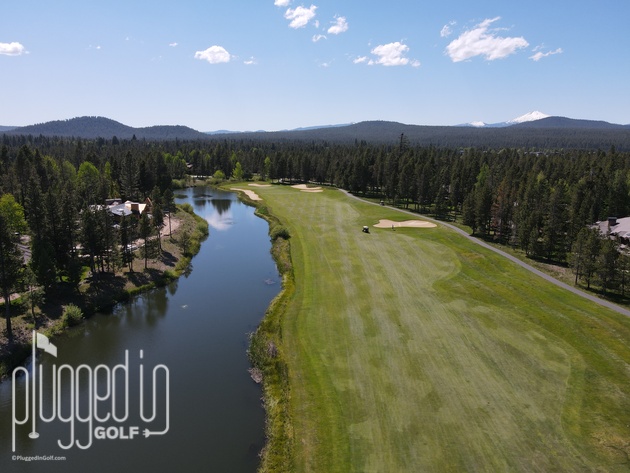
Tee Shots
Crosswater Club gives players a variety of challenges off the tee. There are several holes where you’ll hit less than driver. You’ll encounter a couple slim fairways where you need to be long and straight. There are also a few holes where you can swing away without too much fear of trouble. Said another way, this course doesn’t inherently favor distance over precision or vice versa; you’ll need a little of everything.
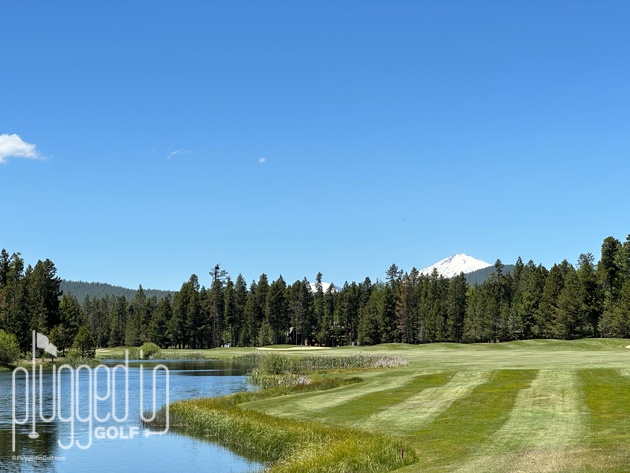
Speaking of precision, you’ll need to use the GPS or local knowledge to stay out of big trouble off the tee. On several holes – like the two seen above – one side of the fairway is guarded by a stroke hazard. There are also spots where you can miss wildly without much penalty, so pick your lines accordingly.
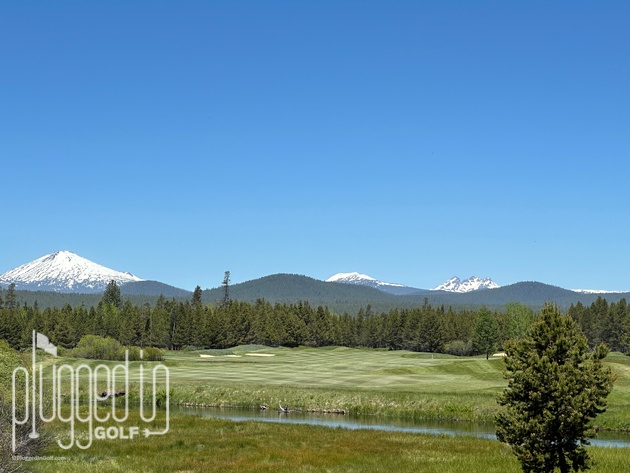
The day we played Crosswater Club, there were four sets of tees (Championship tees are listed on the scorecard but – wisely – were not in the ground). They measured 7,273, 6,811, 6,138, and 5,723 yards. There is also a set of Member tees which are a combination of the middle two and measure 6,550 yards.

As you may have noticed in the pictures, Crosswater Club is pretty flat. This means there are no elevated tee shots that will give you bonus distance. You need to earn every yard, so pick your tee boxes accordingly. Also, like its neighbor, the Jack Nicklaus course at Pronghorn Club [review HERE], Crosswater Club strongly favors players who are hitting short irons into the greens. I’d advise you to feed your ego with birdie putts, not by tipping it out.

Approach Shots
Testing approach shots are the defining characteristic of Crosswater Club, but it’s not unfair. On the player’s side of the ledger, you’ll almost always have a reasonable stance. The movement in the fairways is modest, so you won’t be dealing with unusual lies. That said, there’s enough gently rolling elevation to block clear views of everything you might want to see. You’ll need to trust your GPS and your yardage book.
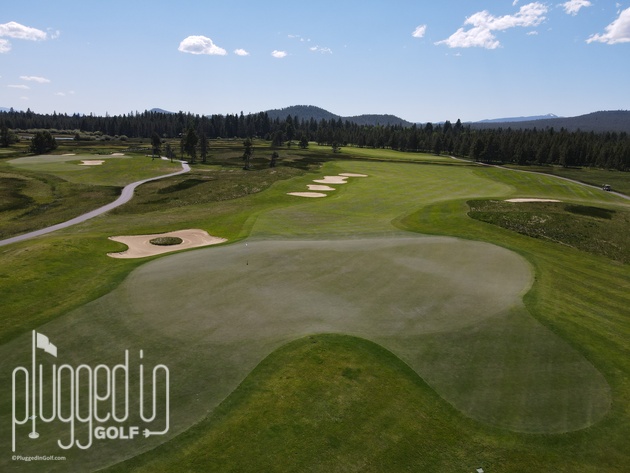
Crosswater Club is also fair about doling out penalties for inaccurate driving. The fairways are cut at a moderate length, making them comfortable for any player. If you’re a bit off target, the rough is fairly light. It can be sticky, but it’s not a major hindrance. However, if you venture into the trees or hazard areas, you’ll find long, patchy grass that’s waiting to snare your club head. It’s also pretty easy to lose the ball entirely.
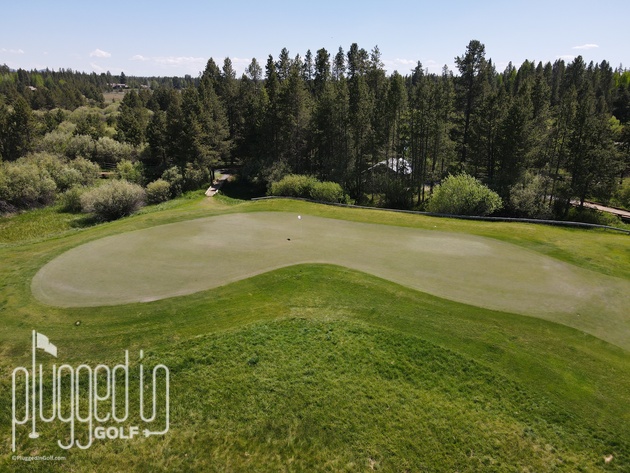
The two biggest things that make approach shots difficult at Crosswater are the size and shape of the greens. Hole #5, above, is the most stark example. This isn’t a huge green in terms of square footage, and it plays much smaller due to the shape and the angle of approach. Players are required to hit a high, soft shot with minimal room for error short or long. And, if you have any interest in a birdie putt, your margin for error left and right is small, too. Other holes are not as dramatic, but they employ the same principles to demand precise iron shots.

What makes Crosswater Club playable is that it balances those tough holes with some that are more “gettable.” The green on #16, above, sits square to the fairway. It also allows players to roll the ball up, negating the difficulty of the firm greens. But golfers do need to make hay on the birdie holes because only the most skilled ball strikers will walk away from all the tough ones unscathed.
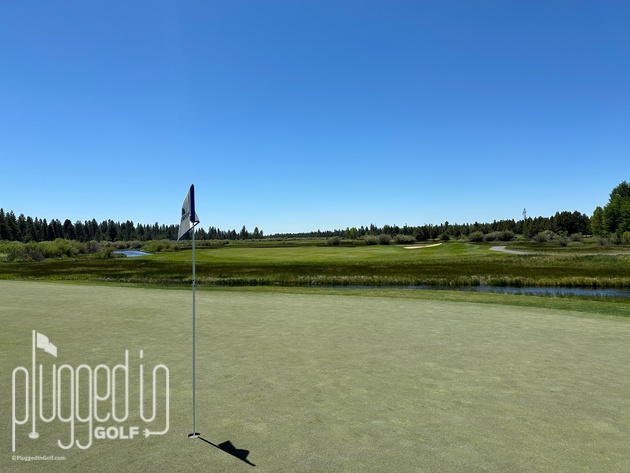
The last thing to note about the approach shots is the frequent presence of stroke or near-stroke hazards. On nearly half the holes, there is water or a waste area on one side of the green. Much like with your tee shots, you need to use your eyes and the GPS to be alert for this trouble and make a plan to play well away from it.
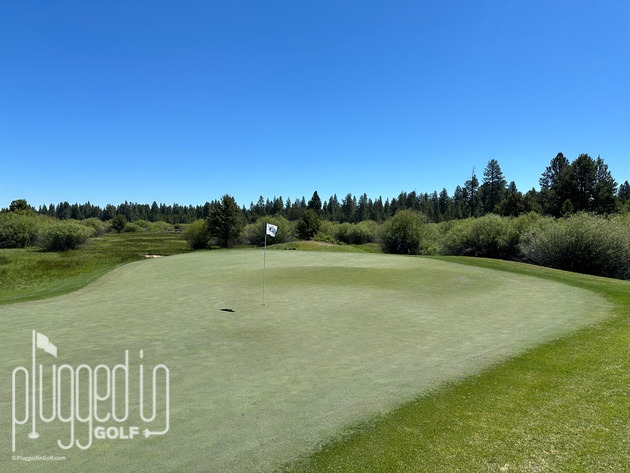
Greens & Surrounds
If you get a green in regulation at Crosswater Club, the hard work is complete. The greens run at a quick-not-crazy pace that’s uniform across the course. Much like the fairways, the movements in the greens are generally modest, though there are some sharp shoulders and ridges that effectively segment the greens. There are very few straight putts at Crosswater, so you’ll need to bring a sharp eye for green reading if you want to make birdies.
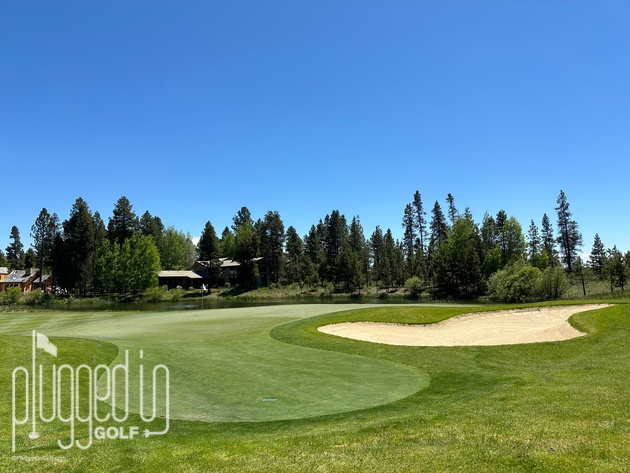
Around the greens, there’s a huge variety of trouble. Regardless of your short game strengths, you’ll find spots that are easy and some that will make your palms sweat. As you see above, there are some large bunkers as well as tightly-mown collection areas.
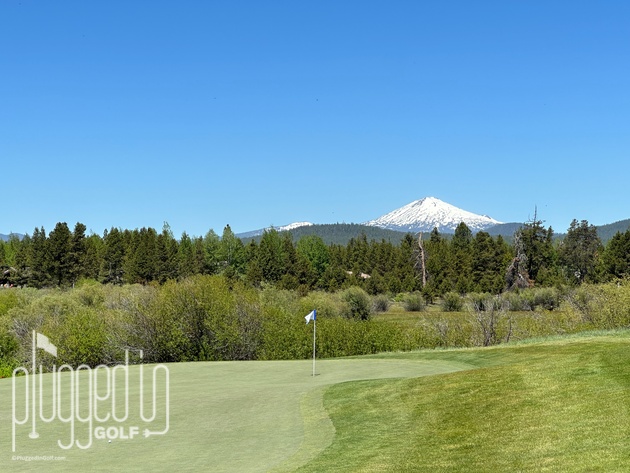
There are other greens that have the traditional three cuts – green to fringe to rough – all the way around. This is mixed with all types of elevation changes, from steep drop offs to gentle swells. Overall, you can’t rely on just one type of shot to save your short game at Crosswater Club; you need a full arsenal of wedge shots.
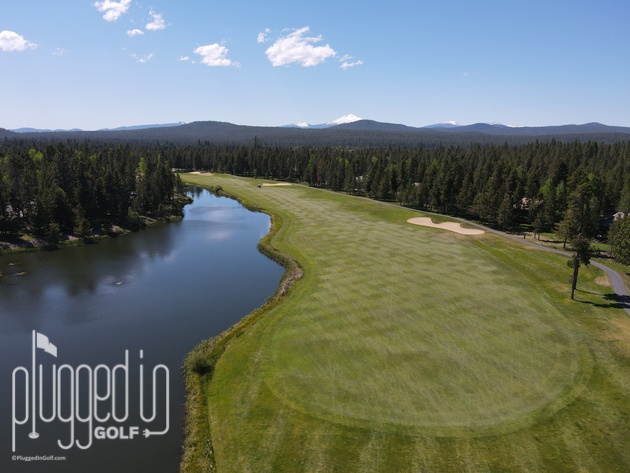
Overall Design
Crosswater Club is a strong test that doesn’t feel overwhelming or unfair. The front nine is significantly tougher, but if you can keep your score together to the turn, the back nine gives you scoring opportunities.
While Crosswater does have tournament-level challenge, there’s nothing tricky or gimmicky about it. For me, that gives this course a ton of replay value. No one in our group scored particularly well, but everyone left feeling like the course was fair and would have given up a good score had our games been sharper. Also, it presents tons of fun, varied shots that any golfer would be excited to try again.
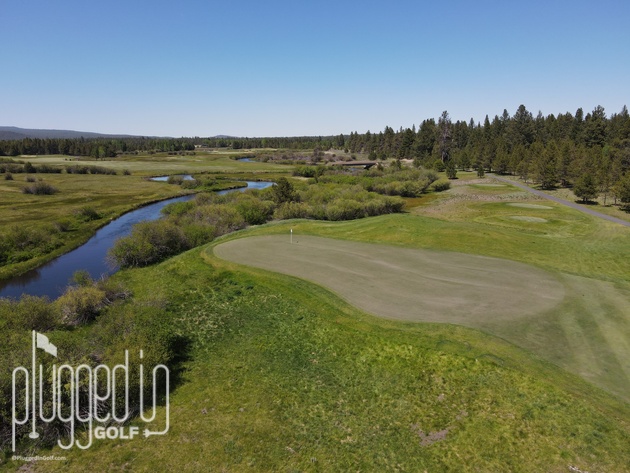
Favorite Holes
#4 – Par 4 – 413 Yards
Off the tee, you can choose to play a measured shot to the primary landing area or fit a longer shot into a skinny section of fairway. Bold, successful tee shots will be rewarded with a shorter shot into the shallow green that’s fronted by a hazard.
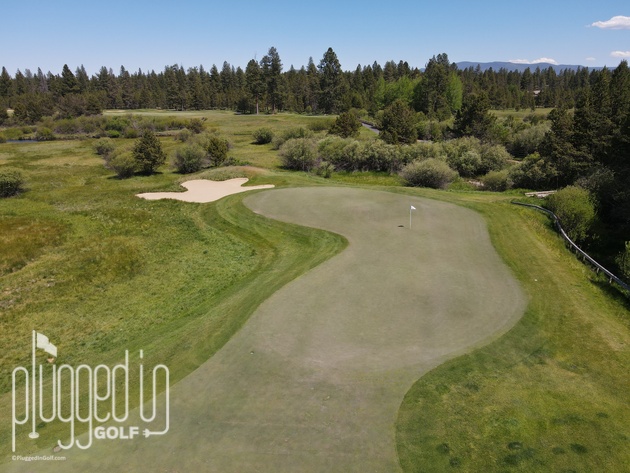
#5 – Par 4 – 460 Yards
The toughest hole on the course really bares its teeth if you’re playing from the championship, black, or blue tees. Your drive has to cross the Little Deschutes River then keep to the right. Playing from the white or gold tees removes the forced carry. Regardless of your tees, your approach shot must be high and soft to hold the wide, shallow green.
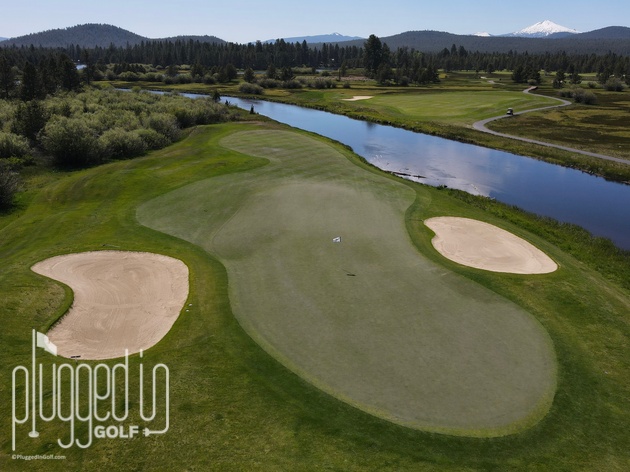
#18 – Par 4 – 456 Yards
The closing hole is a beauty. You’ll tee off with less than driver, trying to get as close to the water as you can. Your final approach is played over the river to a green that sits at an angle and has bunkers short and long.

Conclusion
With over a dozen professional and NCAA Division 1 tournaments on its resume, there is no question that Crosswater Club is a championship-level test of golf. It’s also an undeniable beauty, so whether your game is Tour-ready or not, this needs to be a stop on your central Oregon golf itinerary.
Visit Crosswater Club HERE
He founded Plugged In Golf in 2013 with the goal of helping all golfers play better and enjoy the game more.
Matt lives in the northwest suburbs of Chicago with his wife and two daughters.
- Performance Golf Click Stick Training Aid Review - October 18, 2024
- Callaway Opus Platinum Wedge Review - October 17, 2024
- When to Take a Break from Golf - October 15, 2024


